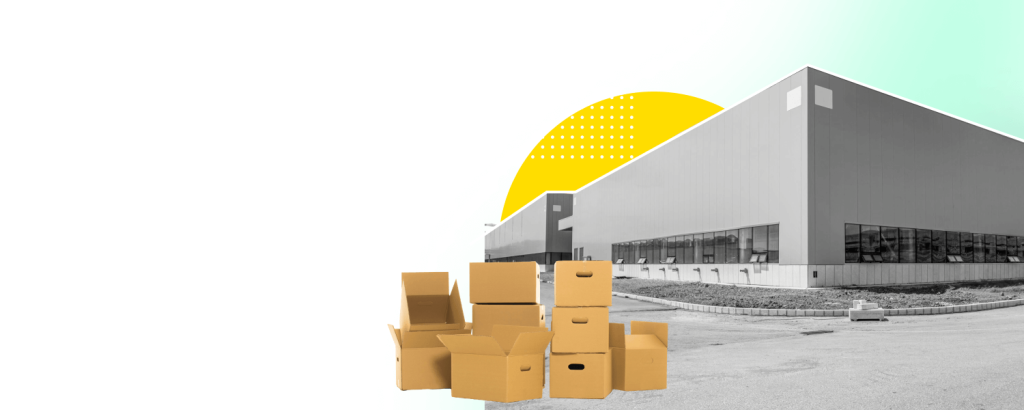
Best PHP Security Practices And Tips For Creating Secure Applications
Introduction to PHP Security
The importance of PHP security
Given its reach across 80 percent of the world’s web and top 10 million domains, PHP’s security isn’t a matter to be taken lightly. In fact, with the continuous update of security best practices, it’s critical. It’s the duty of web developers to ensure their applications are strongly fortified to prevent any security vulnerabilities. By setting desired parameters in the file, as per our supplementary research, they can further bolster security compliance. Features like Cloudflare can identify and block malicious requests, thereby enhancing the application’s safety. Web developers should also remember to keep the software up-to-date, ensuring server and PHP are configured correctly. Regular security audits can help identify any slip-ups, fortifying the systems against breaches, thus emphasizing the importance of PHP security.
Is PHP Secure?
Yes, PHP is secure. However, security depends on how code is written and the use of built-in security features. Like other languages, PHP’s security is in effective coding practices.
Essential PHP Security Measures
Always use the latest version of PHP

Why is updating PHP essential? New PHP versions offer regular security fixes and enhanced php support, more critical when working with php apps and utilizing php frameworks. Because outdated PHP versions expose your site’s vulnerabilities, which are easily exploited, they’re comparable to an open door for hackers. Indeed, a 2019 report by Accenture noted a 67 percent surge in security vulnerabilities since 2013, including in web apps using PHP. Therefore, continuously updating PHP and the php scripts within your structure not only fosters better performance but also bolsters your site’s security. Stay current, stay safe.
Understand and Document Your Existing Infrastructure
Not knowing your IT infrastructure can be your downfall. Underestimating the importance of a thoroughly documented and well-maintained software bill of materials can pave the way for gaping security holes. This bill should detail all deployed technologies, especially server-side languages used for web development such as PHP, ensuring nothing falls between the cracks. It should be noted that according to research, PHP is used by 79 percent of all the websites whose server-side language is known, underlining its significance in infrastructure. Know your infrastructure; secure it better.
Secure Your PHP Infrastructure and Web Server
Securing your PHP infrastructure and web server is no easy feat. Surprisingly, most security flaws come not from hacking but from misconfigured servers. So, it’s vital to regularly review server configurations, especially for httpd and other server side components, and verify conformity with PHP security best practices. It is advisable to limit directory access by placing your files not in the root directory but in a public folder. This can be achieved using the open_basedir function. It’s also essential to disable unnecessary settings and ports to shrink the attack surface, while constantly patching and updating software to tackle known vulnerabilities. PHP, being among the prevalent server-side languages, warrants particular attention. Protection against web threats commences with a fortified infrastructure!
Use Up-to-date Code Dependencies and Third-party Components
Are your code dependencies and third-party components up-to-date? Adhering to current coding practices ensures that they are! Utilizing outdated versions can compromise the functionality of your web program, leaving it susceptible to attacks due to known vulnerabilities. Seize the advantage by ensuring you’re leveraging the latest versions and habitually carrying out implementation of security patches. Remember, outdated code equates to a system that’s outgunned. Stay current with up-to-date code dependencies. Maintain the integrity of your coding practices.
Securely Upload Files
File uploads can pose significant security risks. Learn the art of securing uploads – rename files, store passwords in unseen folders, validate file types, and manage user passwords. To secure the input value, store these files outside web root directories or in restricted-access ones. An SSL certificate can help prevent malicious third parties from stealing visitors’ input values, including usernames and passwords. Controlling access to uploaded files and input values can prove a game-changer in your PHP security strategy. Always validate user inputs, always secure!
Use SSL Certificates For HTTPS
SSL certificates are crucial for securing connections. They establish encrypted links via the HTTPS protocol, reducing the risk of data exposure. Modern browsers like Chrome, Opera, and Firefox endorse HTTPS as an additional security layer. Using HTTPS, SSL, and robust encryption enhances data protection, making it less susceptible to attacks. Prioritize secure exchanges!
PHP Security Best Practices
Always Code With Security in Mind
It’s easy to get side-tracked while coding with various functionalities. But, prioritizing your web apps’ protection should be paramount. According to a 2019 report by Accenture, security vulnerabilities have surged by 67%, including web apps that use PHP. Keep this in mind and adopt a proactive approach: implement security measures early on such as data type verification during input validation, strive to protect against SQL query manipulations, and prevent the chaos of undesired code injection or XSS attacks. Remember, your primary duty while working with logic-based codes? Security, layered onto usability. Happy coding, but keep in mind, safety never takes a holiday! With every new format of code you write, ensure it adheres to the best security practices.
Restrict Access to Sensitive Files
A cornerstone of PHP security is locking down access to sensitive files. Configuration files, database credentials, and source code are all prime targets. As a best practice in security, apply mechanisms like ‘whitelist’ and ‘default’ settings to reinforce the protection of these invaluable assets. This includes using tools like .htaccess for Apache and storing files outside the web root directory but also ensuring the application of IP whitelisting. This can be achieved through platforms like Cloudways, where you can default your settings to whitelist IPs, thereby concealing your database from anonymous users. Unauthorized access becomes a thing of the past with such a minimum level of security! This allows you to set need-based access, keeping your assets safe.
Don’t Rely on Cookies for Security
Cookies can be tempting to use for quick storage, but remember they’re not inherently secure. Attackers can easily pilfer sensitive data from them. If you must use cookies, be sure to encrypt data first. Strengthen your security – don’t put your trust in cookies alone!
Use allowlists Instead of Blocklists
Whitelists offer a more robust security approach than blocklists. Similar to top-tier cloud hosting providers with IP whitelisting, they only permit authorized entries, ensuring exclusive access to valuable data. The rule of thumb is to deny all by default and allow as needed. Employing a whitelist marks an era of strengthened online safety. Welcome to enhanced security!
Maintaining PHP Code Security
Perform Regular Security Audits
Security audits are priceless. They’re crucial to unearthing security flaws and vulnerabilities before they’re ruthlessly exploited, most of which often come from simple misconfigurations. Future-proof your web applications with regular audits scanning not just for common glitches but also for profound flaws in the code such as XSS, CSRF, SQL Injections, and more. This type of thorough examination allows for the identification of possible security vulnerabilities that can even let attackers gain access to sensitive data or take over your website. Find it before they do – that’s the mantra. Remember, a comprehensive security audit conducted today guarantees a worry-free tomorrow— letting you enjoy Cloudflare-like protection that can block malicious requests before they become a threat! So, prioritize error logging and security audits, particularly in your staging and production environments. They’re essentially your first line of defense against potential security flaws and vulnerabilities.
Educate and Train All Employees on Security
Education is power. Train all employees on PHP security best practices update. Inform them about common threats and secure coding habits via beneficial and timely blog posts. After all, your PHP security is as strong as its weakest link. Sharing such documentation within your organization is paramount; it not only keeps everyone updated but serves as a crucial security strengthening measure. Regular incorporation of security training and comprehensive documentation in your organization’s agenda goes a long way in protecting your codebase.
Update PHP Regularly
Keeping PHP updated is not an option, it’s a necessity. Failing to upgrade can expose your precious codebase to security risks. So, ensure that you promptly upgrade to new stable versions once they are released. Regular updates = a well-guarded fortress! Remember, protection is better than cure, so keep PHP updated.
Common PHP Security Issues
SQL Injection Attacks
SQL Injection remains a common attack against PHP applications. Hackers manipulate MySQL database queries allowing them to retrieve sensitive information or to even carry out code injection. This malicious command is inserted into SQL statements. However, you can mitigate these risks by using Prepared Statements and PHP Data Objects (PDO), as well as ensuring all user input is properly escaped to avoid potential intrusion. Moreover, it’s crucial to limit database permissions to protect against SQL Injection. Remember, with enhanced levels of cyber threats, it’s a veritable battlefield out there!
Cross-Site Scripting (XSS)
Cross-Site Scripting (XSS) is a notorious technique of injecting malicious scripts into web pages. Alongside this, the potential threat of cross-site request forgery (CSRF) adds another layer of security concern. In a CSRF attack, unwarranted actions can be conducted on authenticated websites by the end user, who can surreptitiously forward harmful commands to perform undesired tasks. Like XSS, CSRF also necessitates strong protective strategies. The best way to combat XSS? Employ strong input validation and output encoding techniques. Implement Content Security Policy (CSP). PHP programmers, in particular, have the capacity to reduce such common dangers, including CSRF and XSS, avoiding data tampering and sensitive data breaches. Remember, XSS and CSRF are stealthy adversaries; stay alert!
Session Hijacking
Beware of session hijacking! In this all too common cybercrime, attackers snatch the session ID, often gaining access through a web user’s browser. By validating its storage in the stack, they can then exploit user credentials, leading to unauthorized access to your application. Unfortunately, nefarious actions such as credentials manipulation like altering the user’s username or login details can be a result of this. Session hijacking often occurs via XSS attacks or through unauthorized access to session data. You can forestall such breaches by binding the session ID to user properties and undertaking regular security audits. Remain vigilant; don’t let your user’s sessions go hijacked!
Conclusion
Final Thoughts on PHP Securities
PHP security demands relentless care and attention. Incorporate these best practices into your development lifecycle. Keep your server secure, train your team members, maintain ongoing security audits, and stay updated on the latest threats and countermeasures. Remember, the power to secure PHP is in your hands!
Maintaining PHP Security With PHP LTS From Zend
Maintaining PHP security can be a Herculean task. With php support now more critical than ever in the face of criticisms, Zend comes to your aid! Offering support particularly through our PHP LTS, we provide intricate improvements and bug fixes for those PHP versions that have reached the end of their life. Zend’s devoted security and consulting services make sure your PHP applications not only remain audit-proof but also practically impenetrable to attacks, even those that can exploit object serialization. Secure your PHP now with Zend PHP LTS offering profound php support. At Zend, your security is our mission!
Frequently Asked PHP Security Questions
Q: How to test PHP security?
A: Testing PHP security involves several steps. Firstly, use services like Cloudflare, which are adept at identifying and blocking a wide array of PHP security vulnerabilities before they reach your site. Secondly, you can use automated tools such as code scanners or penetration testing tools to detect any flaws. Then, conduct manual code reviews to adjust security measures. This not only helps in security compliance but also addresses unique security needs of every website. Lastly, perform security-focused regression testing after each code iteration. And remember, the real key to PHP security? Consistent testing and timely software updates to rectify identified flaws!
Q: How to ensure PHP database security?
A: Ensure PHP database security using MySQL with robust, unique user passwords. Manage database queries effectively while protecting against SQL injection attacks by leveraging prepared statements and parameterized queries. Encrypt sensitive data, like user passwords, to deter malicious activities and enhance secure storage. Limit database permissions based on a ‘need-to-know’ basis for added security. Utilize security methods on Cloudways, such as whitelisting IPs for remote MySQL connections, to safeguard assets from anonymous users. A secure database is a robust line of defense!
Q: Which is a secure method to encrypt password in PHP?
A: Securely encrypt passwords in PHP using algorithms like bcrypt or Argon2. These prioritize security and add computational complexity, deterring brute-force attacks. Tools like halite with libsodium, or options like openssl or AES 256 bit with CBC mode, ensure secure password storage. PHP’s built-in safety features simplify encryption for developers, aligning with best practices. Remember, secure password storage equals safer PHP applications!
Q: What is a PHP vulnerability?
A: A PHP vulnerability is a weakness in a PHP codebase that attackers can exploit to gain unauthorized access, manipulate systems, or cause damage. Most vulnerabilities stem from misconfiguration. Common issues include SQL injections, cross-site scripting, and session hijacking, often addressed in newer PHP versions for improved security. Tools like PHP Malware Finder (PMF) help identify such flaws. Don’t expose your code to harm—defend it against vulnerabilities. Remember, defense is the best offense!






